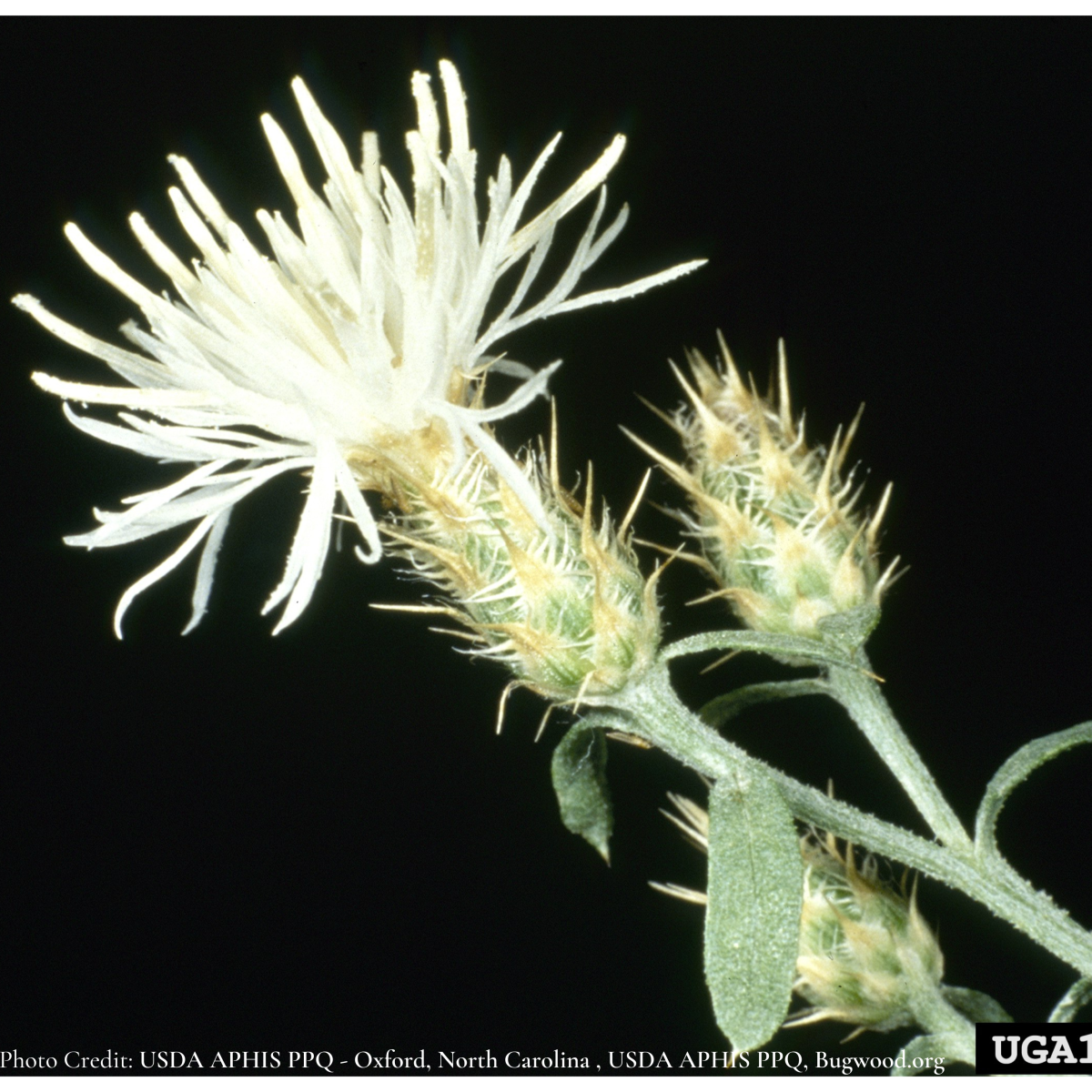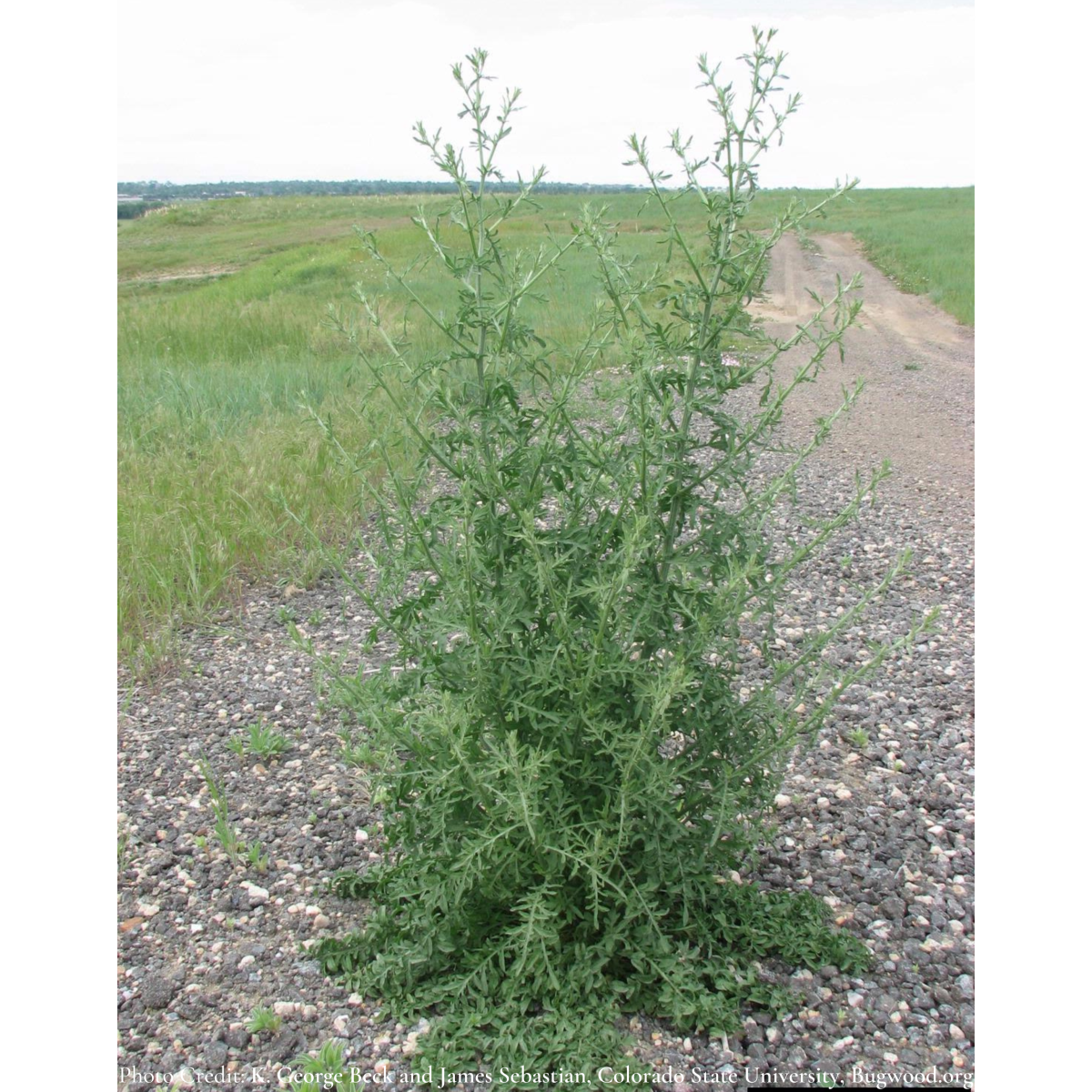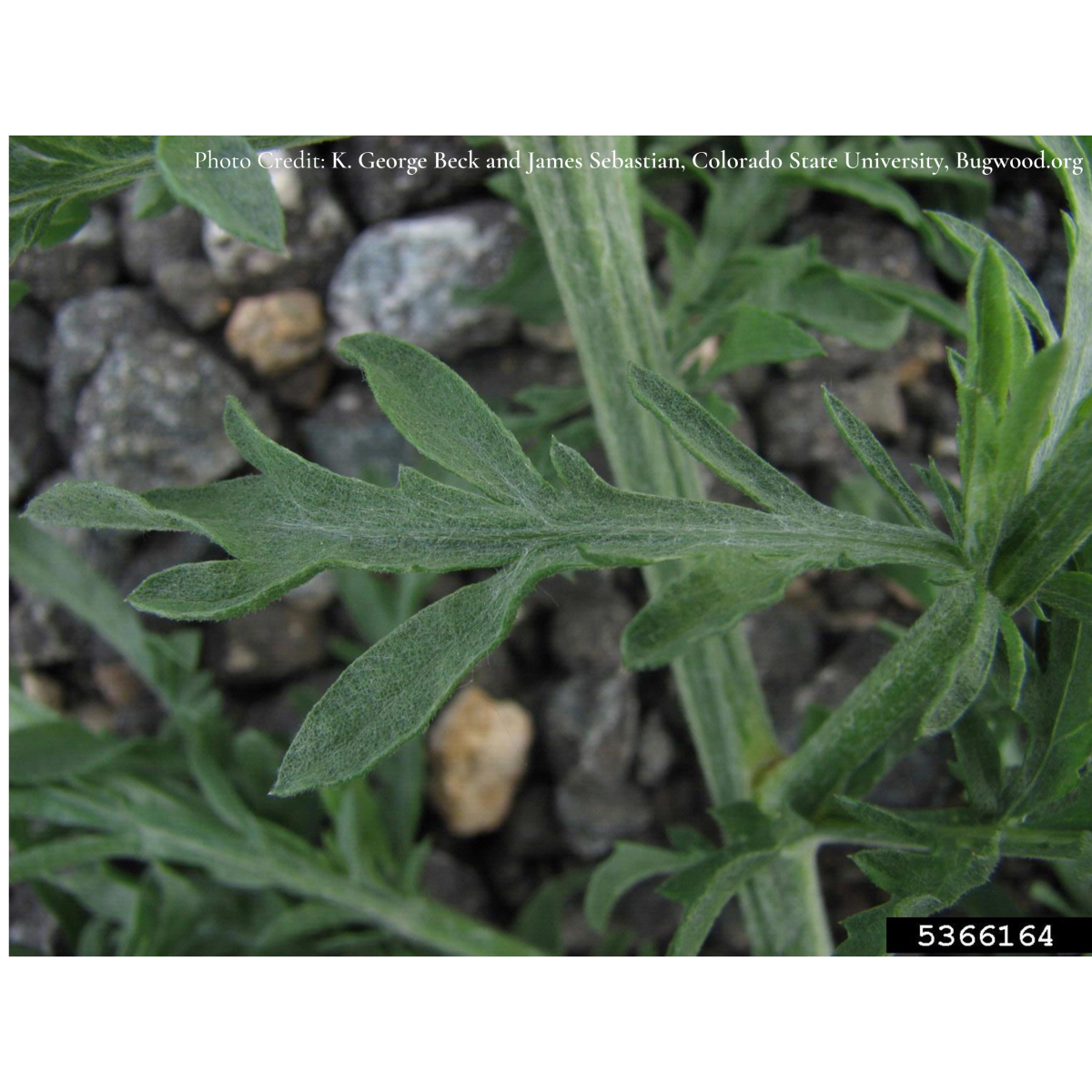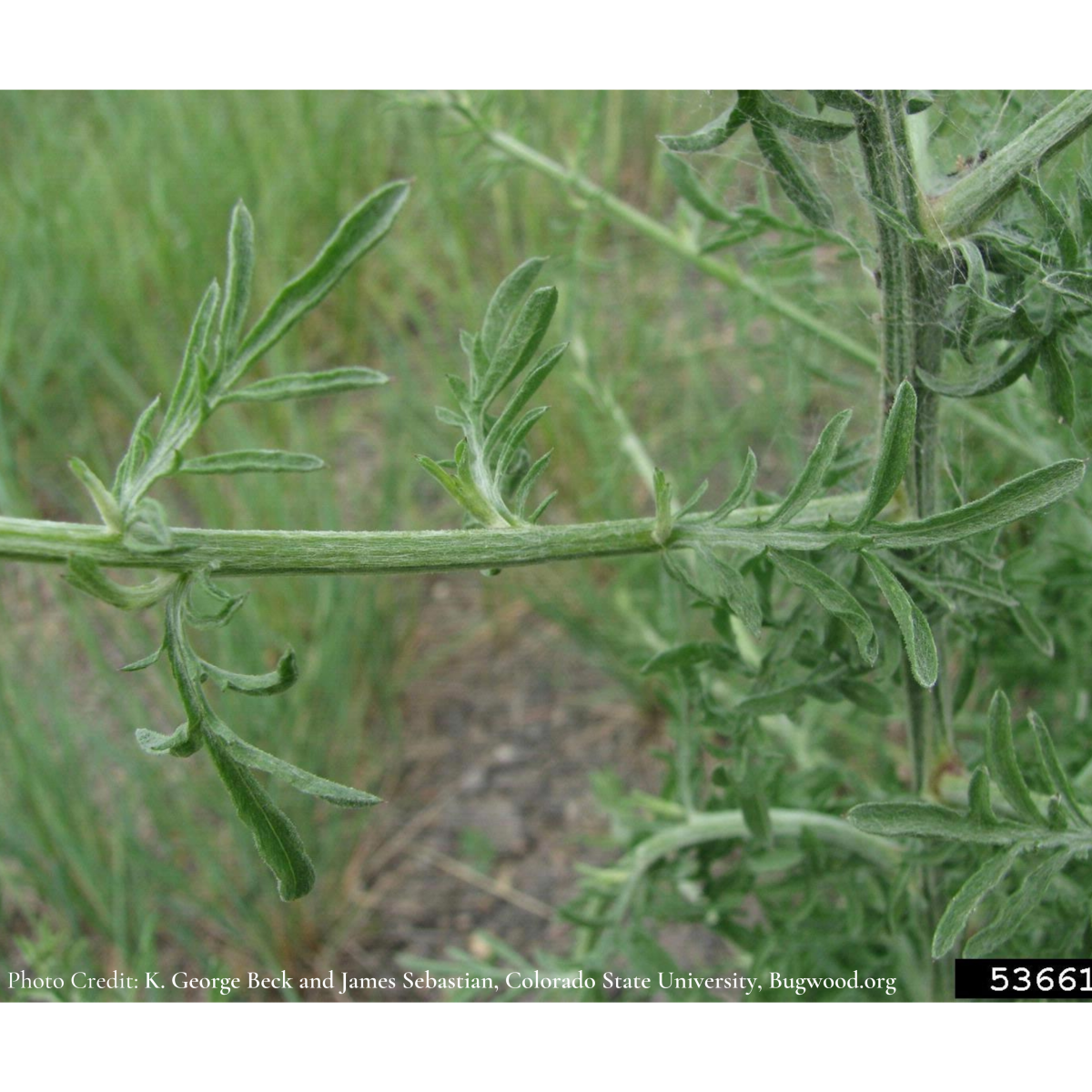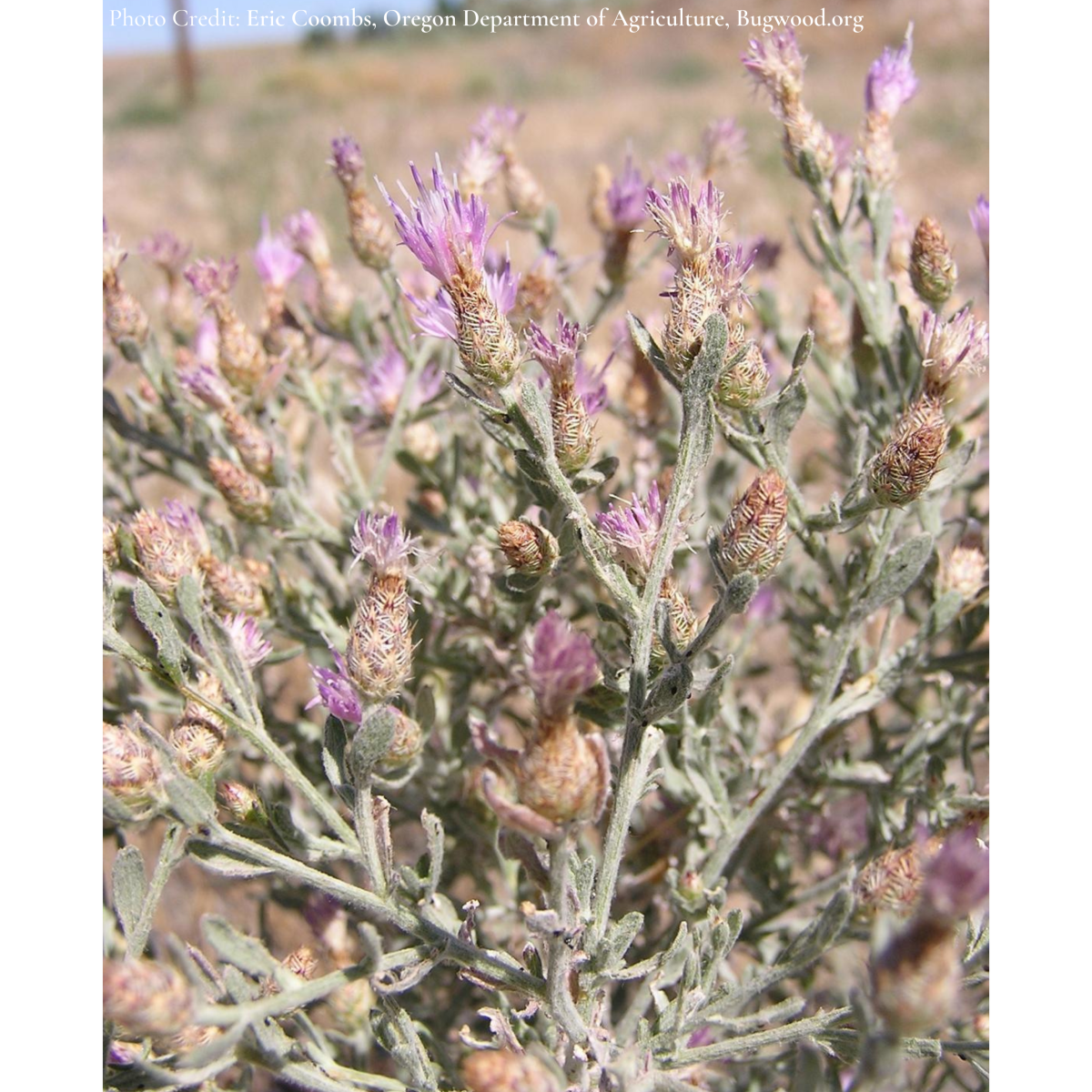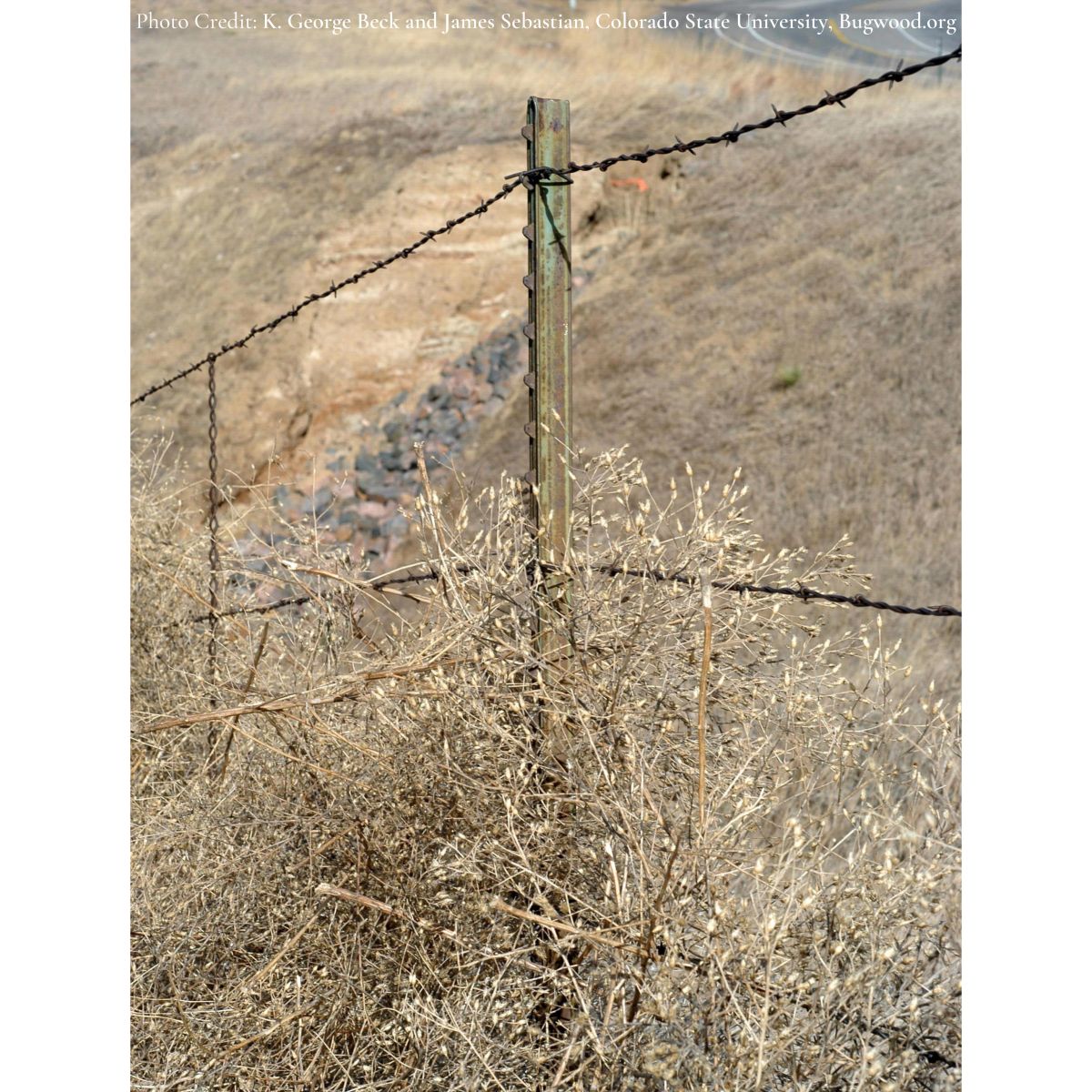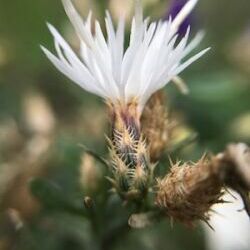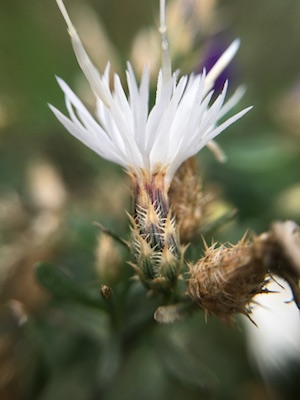
Priority: Strategic Control
General: Heavily branched plant in the Sunflower family often forming a tumbleweed shape.
Height: Grows between 10 to 60cm tall.
Flowers: Flowers are mainly white but can also be pink or purplish-pink. They are somewhat urn-shaped, 1.5-2cm tall. They are in singles or clusters of 2-3 at the end of the branches. Under the white slender petals are triangular floral bracts. They have a spine on their tip and the edges toothed.
Leaves/Stems: Stems have lots of branches and are angled with short, stiff hairs. The hairs give the stems and leaves with a gray-ish green appearance. The leaves of the first year (rosette) plant grow up to 15cm long. All leaves are deeply lobed.
Root: Very deep taproot.
Spreading knapweed, Tumble knapweed
Spotted Knapweed (Centaurea biebersteinii)
Differences: Diffuse knapweed can be distinguished from spotted by the terminal spine on the floral bract. There are hybrids of spotted & diffuse knapweed. Ask for identification assistance from LRISS if unsure.
Where did it come from? Eurasia.
Where does it grow here? Prefers arid, low elevation habitats including grasslands, open dry forests, pasture, roadsides, and other disturbed areas. Cultivation and excessive moisture prevent it from growing on irrigated fields. It is found in most places in our region especially roadsides, gravel pits and railway right of way.
Reproduction: By seed. A single plant can produce up to 18,000 seeds. The seeds can remain viable in the soil for years.
When does it grow, flower & seed? Sprouts May-June. Flowers July-August. Seeds September-October. Knapweed is usually thought of a biennial because it creates a first year plant (rosette) and can remain like that for 1 or more years depending on conditions.
Spreads By: Knapweed can snap off at the base and seeds are spread by the wind when the plant tumbles. Livestock, wildlife and humans also spread this plant. The mature plant with seeds can become stuck on vehicles as well. Seeds are spread when contaminated gravel is spread on highways.
Plant Type: Biennial or short-lived perennial.
- Replaces grasses and plants in natural habitats. This reduces the forage for livestock & wildlife.
- Dense stands can deplete soil and water resources as well as increase soil erosion.
- Contaminates soil and gravel.
- Dead plants can create an increased fire risk especially along road and railway right of ways.
- Infestations contribute to the loss of wildlife habitat.
- Review your property regularly for this species.
- Treatment Remove small patches before it flowers & sets seed. It is necessary to remove the entire plant including the root. When cut, this plant has resprouted. There are 10 biocontrol agents that have been released in BC and many of them in our region. The agents have reduced seed production and density of infestations.
- Cover bare patches or disturbed soil by planting or seeding with non-invasives.
- Check areas where you have removed invasives for any new plants that year and in future growing seasons.
- Dispose of invasive plants responsibly. Bag them for disposal at the local landfill. Composting and burning are not recommended.
- Contact LRISS for specific treatment recommendations.
Southern Interior Weed Management Committee. 2016. Invasive Plants of the Southern Interior BC. 86pgs.
Okanagan Invasive Species Online website.
Photo Gallery
